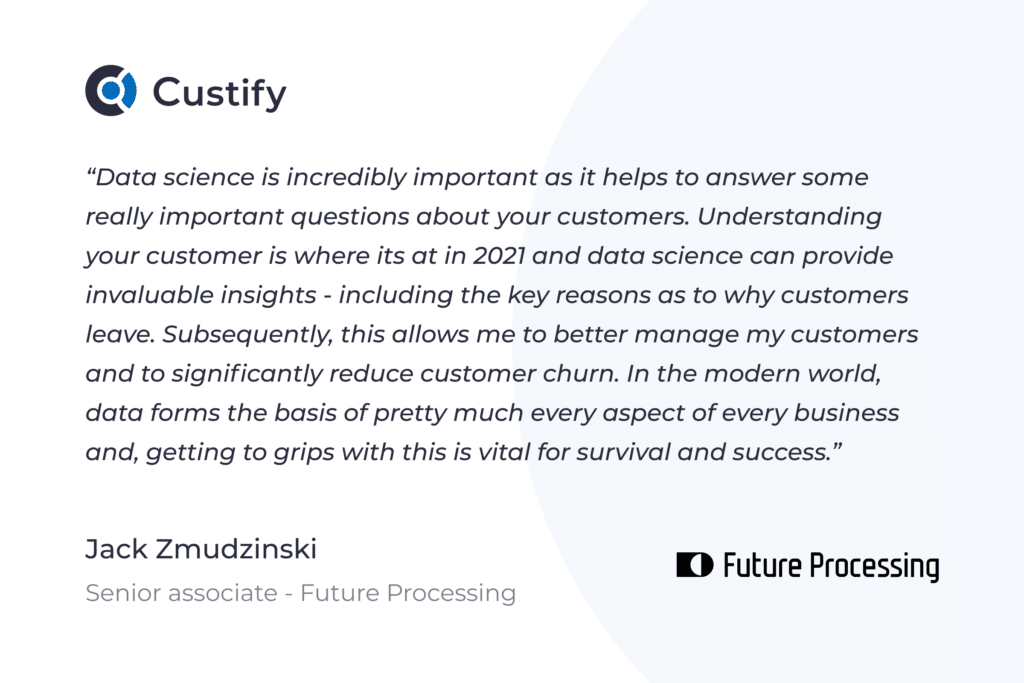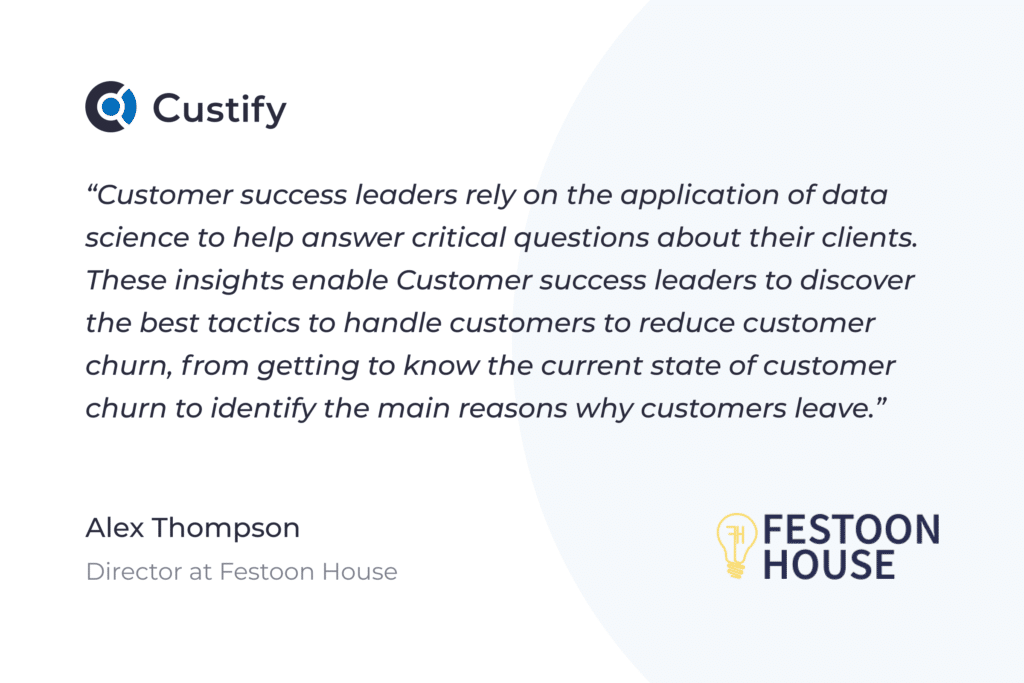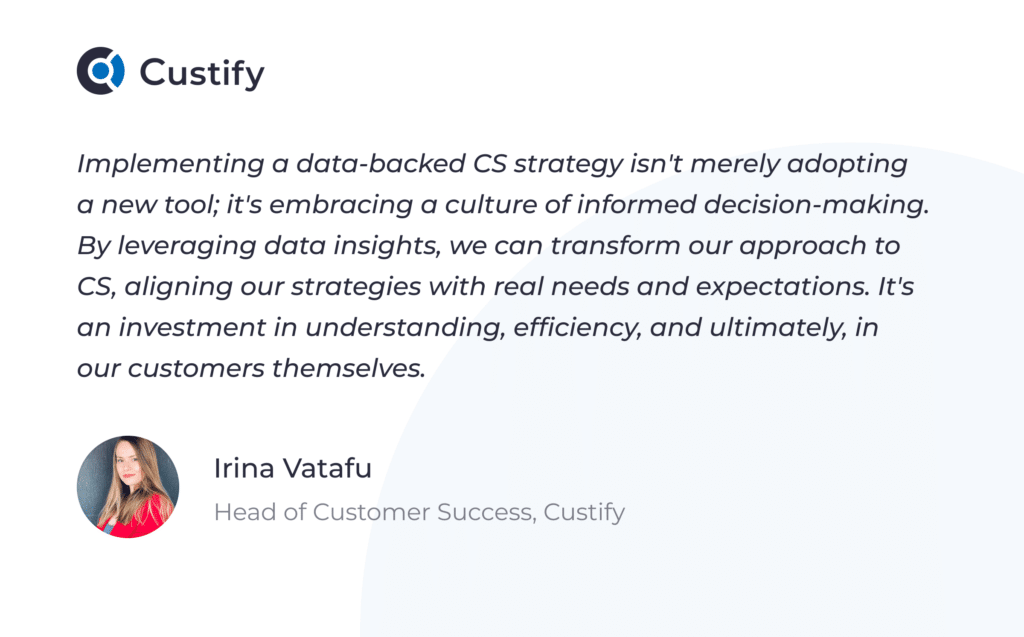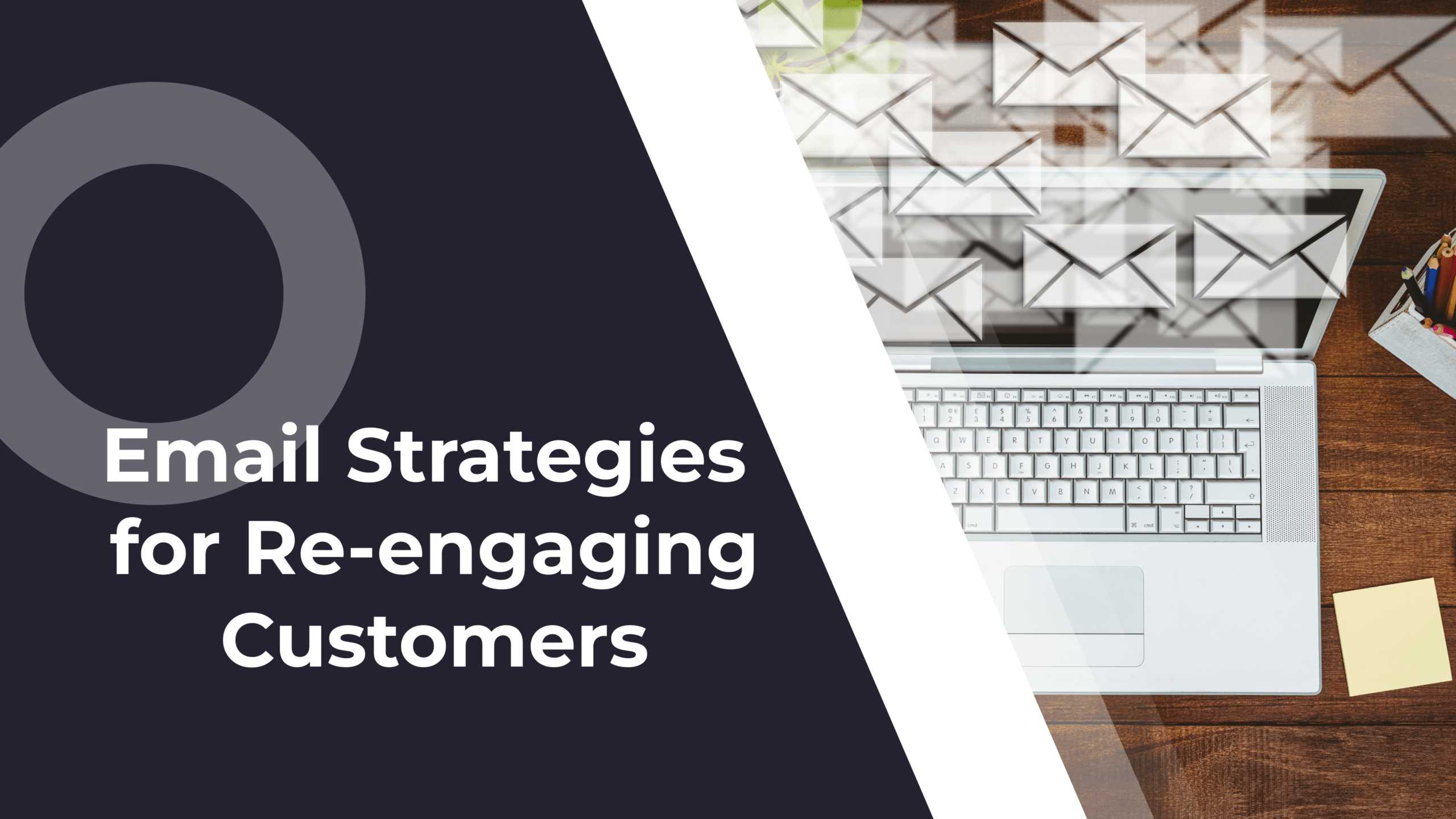Customer success and support teams at large enterprises must engage with thousands of customers every day.
Each interaction is vital to the business relationship you develop with a customer. It can dictate how your product evolves and company goes forward.
That being said, the increasing number of these interactions means it’s impossible to look at each one of them separately or to understand the individual customer journey. So implementing more of a low-touch / tech-touch approach would make sense once you get to that level.
That’s where data science comes into play.
In this article, you’ll find out about the benefits of implementing a data science strategy, the steps you need to follow in order to integrate it successfully, and how you can advocate for it and champion the strategy with your manager.
Why Your Business Needs a Data Science Strategy for Customer Success and Support
While data is an important element in the practice of CSM, most customer success programs are not adequately leveraging either the technology or data science practices to get the most value from their data. There’s no doubt that CSMs need to make sense of customer information. And that’s exactly where your data science strategy comes into play. Here are some benefits:
- You’ll be able to extract deeper insights into the causes of customer churn;
- You’ll create predictive models of customer churn;
- It’ll help you improve the overall health of your customer relationship;
- It’s going to help you with driving up retention and upsell/cross-selling opportunities.
Data Science Strategy for Customer Success and Support
For the past few years, SaaS companies have been leaning hard on data science to optimize onboarding, reduce churn and streamline just about every aspect of their business. And a data science strategy can help you tackle all these with stunning precision. It helps you gain valuable insight on the reasons why some customers churn, who’s at higher risk of churn, when’s the right time to up/cross-sell, and much, much more.
Jack Zmudzinski, a senior associate at Future Processing seems to think so:

So, here’s how you can start data-driven strategic planning for your company:
Step 1. Gather Customer Data
The first step in any data science strategy is to gather the data you need. The most important thing you should consider is having the right system in place to gather the data that’s useful for customer success and support. Why? Because using the customer data from your CSM solution provides you with valuable insights into customers’ interests, thus creating more cross-selling opportunities. The main insights you want to gather about your customers are two-fold:
- Customer Relationship Management (CRM) data: for how long have they been your customers, how much they’re spending with your product, etc.
- Customer usage data: how often they use your product, what type of product features are they use the most, how quickly their concerns (if any) are answered, etc.
Custify’s Customer 360 feature easily does it all with the help of automation. It helps you track your customers’ journeys in order to get an overall view of their progress. What it basically does is it collects data from its raw format and transforms it into sensible and useful metrics that you can later use and learn from.
Alex Thompson, Director at Festoon House, believes data science is essential for CS leaders:

Step 2. Put the Data Together
After you start to collect all your customer data, you’ll need to also put it together in set reports. You should also make sure to streamline as much as possible, in order to avoid any skewed results that can result from faulty data entries. Pull every piece of data you have on your customers. Then, centralize and integrate it into your reports.
If you’re running a big business, you might soon be faced with an integrated data set so large that most data analytics/scientists are unable to correctly assess insights from the plethora of variables available to them. That’s when the adoption of business intelligence and machine learning can improve your company’s time-to-insight to ensure your results are both accurate and timely. Using AI technology, you’ll be able to quickly sift through customer data and provide more in-depth insights than ever. Moreover, it is essential to consider implementing a method of analyzing qualitative data that involves thoroughly examining a data set and identifying patterns to unveil underlying themes. This approach can easily be adapted to suit the needs of various studies, enabling you to generate novel ideas and concepts from the data.

Step 3. Learn from the Data
In order to maximize the benefits of your data science strategy, consider enhancing your team’s capabilities with structured learning opportunities. Obtaining a data scientist certification program can equip your team with the skills needed to leverage customer success analytics more effectively. By investing in continuous education and professional development, employees can become adept at identifying churn predictors and employing predictive models.
This improvement in skill set will empower teams to make informed decisions that are rooted in reliable data insights. Managing data risks is essential to prevent errors in predictive analysis and ensure actionable insights.
However, to be successful with your data science strategy, you’ll need to adjust it to your company’s size and needs. You can either manually analyze the gathered data or, as said before, turn to machine learning solutions. Let’s see the two options side by side:
For Small Businesses: Manually Analyze the Data
For small businesses, the top-of-mind option would be to do it manually. That means you’ll have to train your CS teams in data analysis. It’ll obviously be a long learning curve, but it’s going to be crucial if you plan to differentiate yourself from your competitors in the near future. Or, you can go the other way around and hire a data scientist. The only trouble you might be faced with is going to be facilitating seamless communication between your CSMs, product experts, and data scientists.
“Because Customer Success Administration is a data-intensive endeavor, companies can increase the effectiveness of their CSM efforts by utilizing a data science mindset.
Firstly, I integrate the data silos to help connect the dots across more variables. The more I can understand my customers, the better I am able to meet their needs, address their concerns and ensure they are receiving value from my solutions.
Second, I use machine learning capabilities to discover insights from my clients’ data. Because the size of the integrated data set is so large, data scientists are not able to immediately get insights from the plethora of variables available to them. The adoption of machine learning can enhance time-to-insight to assure my results are both accurate and timely.”
– Dusan Stanar, Founder & CEO of VSS Monitoring.
For Medium/Large Businesses: Machine Learning
For medium to large businesses, machine learning becomes the mandatory solution. Artificial intelligence and machine learning enable a more automated means of processing mass customer data for your company. Machine learning is certainly a golden opportunity for businesses that want to broaden their perspective on all their customers. Because let’s face it: there’s a massive amount of data you’ll have to tackle in order to integrate a proper data science strategy if you’re a larger business. Reverse ETL can complement this by automating the process of moving data from data warehouses into the hands of business and marketing teams by syncing data directly into the tools they use.
Step 4. Integrate What You Learned with your Customer Success & Support teams
As SaaS businesses and customer expectations across industries continue to grow, companies must shift more focus on retention and loyalty. So, why do you need to analyze your customers? Well, they ultimately help you sell more. Regardless of the nature of your business, your customers are the key to your success. So once your customers’ data is compiled, only then can it be applied strategically and tactically, in order to improve your company’s overall results.
Drawing relevant conclusions from the integrated data enables your customer success and customer support teams to:
Be more efficient: by integrating a data science strategy, you’ll be able to prioritize the most qualified leads by improving your overall lead scoring;
Become more informed: your teams will be able to provide more accurate insights into how individual customer lifecycles drive revenue;
Be better equipped to deal with your customers: by more accurately predicting a customer’s future purchasing decisions and willingness to buy, your customer success and support teams will increase cross-sell and up-sell revenue;
Increase customer loyalty & retention: with the help of machine learning, your customer success teams can finally scale effectively and be proactive rather than reactive to potential churn situations.

How Do I Make the Case for Data Science in My Customer Success Organization?
By having all this data readily available, most businesses might become easily overwhelmed by the information overload. So there’s no surprise that making the case for data science in your customer success organization might easily become a struggle. But if you plan to advocate for data science within your team or company, you need to first be able to scale where you stand. In order to efficiently gauge where your data science strategy stands in terms of maturity, you’ll have to start by conducting an internal assessment of the data sources you currently have available.
In order to define the level of maturity of your data science strategy, you’ll need to drive 4 types of analysis:
- Exploratory analysis – which will help you find accurate drivers for customer behavior;
- Descriptive analysis – for finding out the main indicators to prospective leads;
- Prescriptive analysis – to see which courses of action need to be taken in order to change outcomes into positive results;
- Cognitive analysis – which in turn will help you with predicting what might happen in your customers’ lifecycles and why.
“Broadly speaking, data scientists use three diverse types of analytics when taking value from their data: in the following order: descriptive, predictive and prescriptive. The objective of descriptive analytics is to compile traditional trends in the data that notify you about the contemporary state of the world.
The idea of predictive analytics, on the other hand, is to foretell the tomorrow or to be capable to foretell data that we don’t have. Prescriptive analytics depends on both descriptive and predictive analytics to assist you to capitalize on opportunities or decrease risk.”
– Robin Antill, Founder & CEO of Leisure Buildings.
Then, after you assess the maturity level of your data science strategy, the number of problems you need to solve before implementing it, and the necessary investments, you can advocate for it. When making the case for a data science strategy to your managers, make sure to keep the focus on how it will eventually improve your company’s outcomes in the near future. Focus on:
- How it will improve your overall business by taking more impactful actions;
- How your statistics will become better by having more insights and information;
- How automation will make your company become more efficient and proactive.
Data Science Strategies Are Just the Start
The data integration space is massive. There are many different reasons to consolidate your data science strategy and still more tools to help you do it. It’s just the beginning and it needs to be followed religiously in order for it to work long term. At this point in time, it’s mostly about experimenting and finding the right data science strategy outline that will benefit your company most.
How do you use data science in your organization? Let’s talk.




